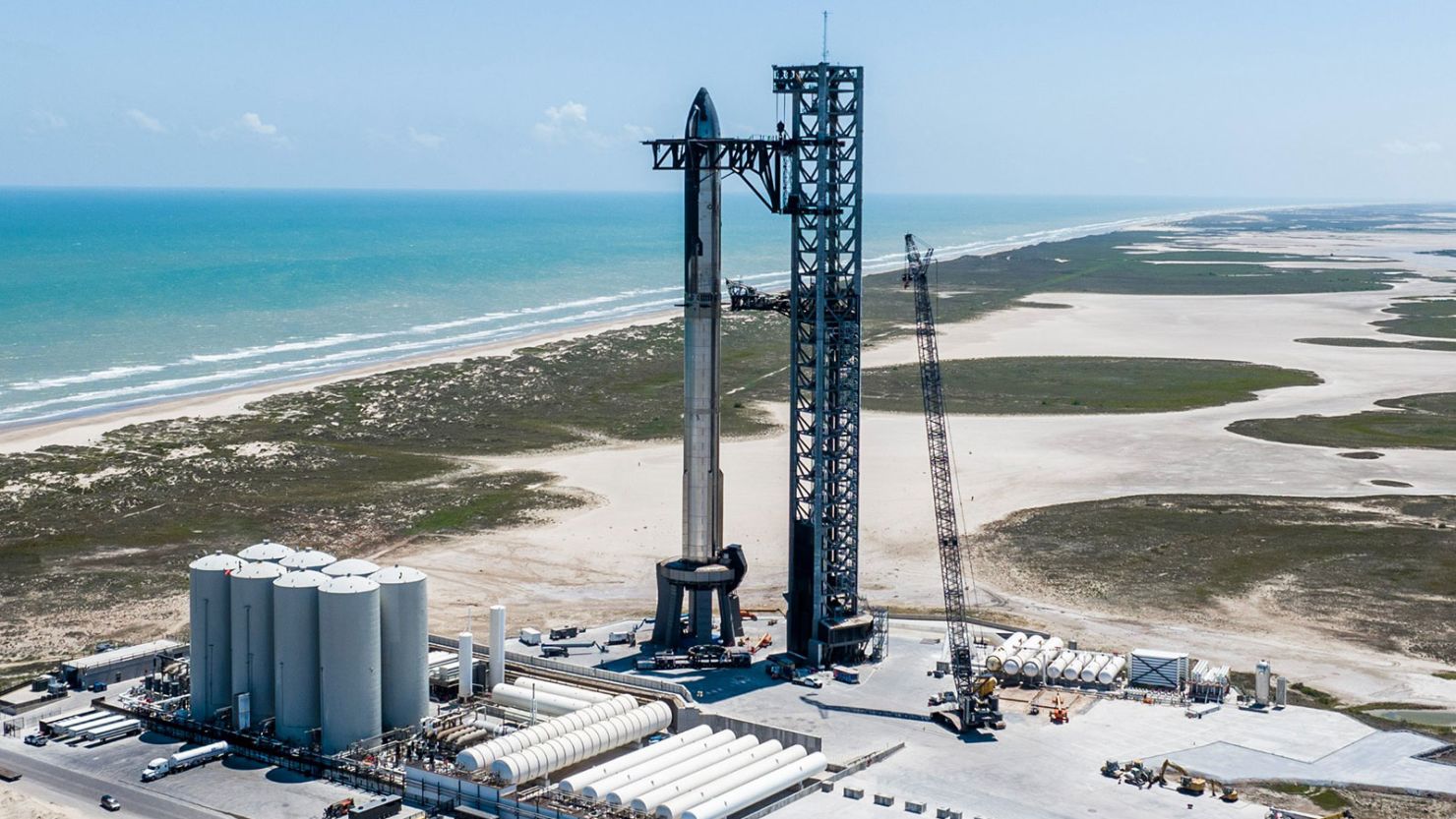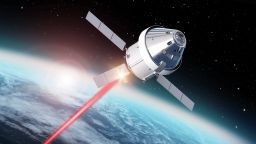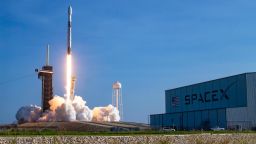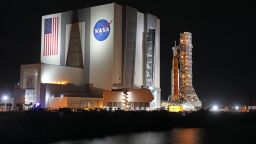Sign up for CNN’s Wonder Theory science newsletter. Explore the universe with news on fascinating discoveries, scientific advancements and more.
A top SpaceX executive is accusing government regulators of stifling the company’s progress on its Starship megarocket — potentially opening the door for China to beat US astronauts back to the moon.
William Gerstenmaier — SpaceX’s vice president for build and reliability who previously served as NASA’s associate administrator for human exploration — delivered the warning Wednesday to the Senate subcommittee on space and science at a hearing on commercial space regulations.
The remarks come as SpaceX is facing an environmental review by the Fish and Wildlife Service and a safety review by the Federal Aviation Administration of plans to launch its massive moon rocket again at the company’s facility in South Texas.
Starship — the rocket and spacecraft system the company is developing in part to land astronauts on the moon for NASA’s Artemis program — exploded after its first test flight in Texas earlier this year.
“It’s a shame when our hardware is ready to fly, and we’re not able to go fly because of regulations or review,” Gerstenmaier said, noting that SpaceX has been ready for a month to launch the next Starship test flight. “Licensing, including environmental (review), often takes longer than rocket development. This should never happen. And it’s only getting worse.”
He also claimed the regulatory delays have “nothing to do with public safety.”
Race to the moon
Gerstenmaier said the discussions about the regulatory environment are critical “in the face of strategic competition from state actors like China.”
“These delays may seem small in the big scheme of things but…. delays in each and every test flight adds up. And eventually we will lose our lead and we will see China land on the moon before we do,” Gerstenmaier said.
The FAA, which was not represented at the hearing, said in a statement Wednesday, “Keeping pace with industry demand is a priority and is important for several reasons, including meeting our national security and civil exploration needs.”
NASA’s Artemis program aims to return humans to the lunar surface for the first time in more than 50 years, racing against China’s own plans to develop a moon base.
SpaceX faced pushback over its first test flight. A group of environmental advocates sued the FAA over the incident, alleging the agency did not comply with environmental law by allowing the launch to move forward.
SpaceX, for its part, has frequently said explosions of its rockets are welcome in the early stages of development, claiming it helps inform design quicker than ground tests.
Gerstenmaier did acknowledge that in addition to regulatory hurdles, SpaceX continues to face technological challenges with Starship development. It still is not clear whether SpaceX can meet NASA’s goal of having Starship ready for a lunar landing by late 2025.
“We’ve got a lot of challenges in front of us to meet the requirements that we received from NASA,” he told CNN in brief remarks after the hearing.
“The only way we can get there is by flying,” Gerstenmaier said.
He added that SpaceX has had a hard time allocating resources amid uncertainty about when the launch license will arrive.
“We had people work extra shifts … We got the vehicle ready, then we couldn’t fly,” Gerstenmaier said, adding that SpaceX will likely carry out more ground tests, such as a wet dress rehearsal, as it awaits the license, but that the regulatory uncertainty prevents them from establishing a more productive schedule.
Regulatory response
The FAA said in a September statement that SpaceX must “obtain a modified license from the FAA that addresses all safety, environmental, and other regulatory requirements prior to the next Starship launch.”
The US Fish and Wildlife Service, which is tasked with evaluating the environmental impacts of SpaceX’s test flight, told CNN on Wednesday that it’s working to begin an official consultation with the FAA. After that, the Service will have up to 135 days to deliver an opinion.
That could delay the next launch of Starship into 2024.
Gerstenmaier attributed regulatory hangups in part to a lack of staffing, saying the FAA’s licensing department is in “great distress” and “needs twice the resources it has today.”
In its statement Wednesday, the FAA said it is “working diligently to attract, hire and retain additional staff.”
In a statement issued Wednesday evening, Deputy NASA Administrator Pam Melroy said properly funding the federal agencies that regulate launches is essential to NASA’s goals.
“As global interest and capabilities in space exploration continue to expand at a rapid rate, America must continue to lead in human exploration with the return to the Moon under Artemis and the first human mission to Mars to search for life farther in the solar system,” Melroy said. “To be successful in achieving NASA’s goals, it’s important our regulatory partners have the resources they need to carry out their oversight duties and keep pace with commercial industry progress.”
Unity amid deep division
Alongside SpaceX at the hearing were representatives from two other commercial space companies: Blue Origin and Virgin Galactic, both of which send wealthy tourists to the edge of space on suborbital rockets.
In a remarkable display of unity on a day of deep divisions elsewhere on Capitol Hill, all witnesses and the subcommittee members that spoke Wednesday were in agreement that the regulatory framework facing commercial space companies needs change and warned against rulemaking that could hamper progress.
The witnesses also called on Congress to streamline regulations and pinpoint a single federal agency to serve as a one-stop-shop for commercial space licensing.
They also advocated that Congress should not allow the FAA to implement new regulations focused on protecting the safety of commercial spaceflight passengers. (A moratorium on such regulations has been in place for two decades but is set to expire on January 1.)
The top Republican on the subcommittee, Senator Eric Schmitt of Missouri, and its chair, Kyrsten Sinema, an independent from Arizona, both agreed the moratorium should be extended.
They each also acknowledged that existing regulations — such as those that outline the process for obtaining human spaceflight launch licenses, as well as satellite licenses — need to be improved.
Correction: A previous version of the story incorrectly identified Senator Sinema’s role on the space and science subcommittee.




